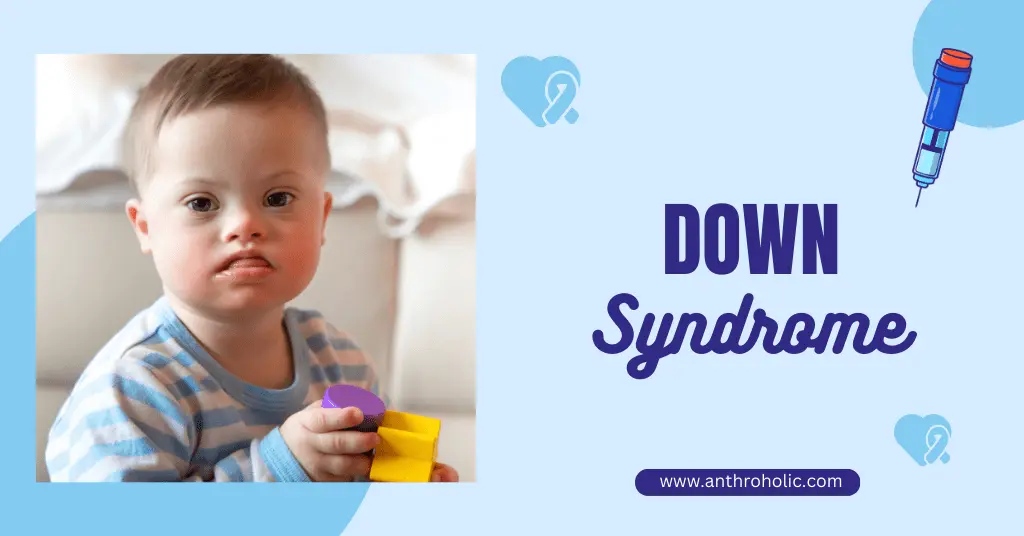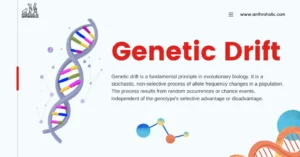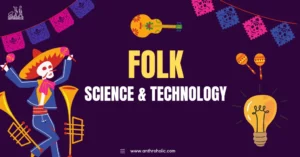AI Answer Evaluation Platform Live Now. Try Free Answer Evaluation Now
Down Syndrome (Trisomy 21)
The landscape of human genetics holds numerous complexities and mysteries, among which chromosomal anomalies stand prominent. One such chromosomal condition which often garners significant attention is Down syndrome. This condition touches millions of lives worldwide, directly and indirectly, and therefore warrants close scrutiny.

Understanding Down syndrome has gained substantial relevance in today’s world due to its significant prevalence rate and its impact on the social fabric. Beyond this, however, the condition also provides critical insights into the study of human genetics, biology, and psychology. Consequently, a nuanced understanding of Down syndrome is essential not only for those directly affected by it but also for society at large.
What is Down Syndrome?
Down syndrome, also known as trisomy 21, is a genetic disorder caused by the presence of an extra 21st chromosome. Usually, individuals have two copies of each chromosome, one from each parent. However, in individuals with Down syndrome, there are three copies of the 21st chromosome (National Institute of Child Health and Human Development, 2020).
Despite its clinical definition, Down syndrome is frequently misunderstood, often reduced to a series of stereotypes and misconceptions. One common misunderstanding is that individuals with Down syndrome are perpetually ill or incapable of leading fulfilling lives, which is a far cry from the reality. Individuals with Down syndrome are capable of leading a full and rewarding life, given the right support and opportunities.
The Genetics of Down Syndrome
The primary cause of Down syndrome is Trisomy 21, where a child has an extra copy of chromosome 21. The process that leads to this extra chromosome is typically a random event during the formation of reproductive cells.
| Chromosome Disorder | Description |
|---|---|
| Trisomy 21 | The most common form, accounting for about 95% of all cases. Occurs when a child inherits an extra chromosome 21 from either parent. |
| Mosaic Down Syndrome | The individual has some cells with an extra chromosome 21 and some without. This accounts for about 2-4% of cases. |
| Translocation Down Syndrome | This occurs when a piece of chromosome 21 attaches to another chromosome during cell division. This accounts for 3-4% of cases (National Down Syndrome Society, 2022). |
The probability of having a child with Down syndrome increases with maternal age, especially after age 35. However, Down syndrome can occur at any maternal age.
Signs and Symptoms of Down Syndrome
Individuals with Down syndrome typically exhibit certain physical characteristics. These may include a flattened face, small head, short neck, protruding tongue, upward slanting eye lids (palpebral fissures), unusually shaped or small ears, and poor muscle tone.
In addition to physical traits, cognitive impairments and developmental delays are common in Down syndrome. This can result in mild to moderate intellectual disability. However, cognitive development and intellectual abilities vary widely among individuals with Down syndrome, and many live independent and fulfilling lives.
There are also several health issues commonly linked with Down syndrome. These include congenital heart defects, respiratory problems, hearing difficulties, Alzheimer’s disease, childhood leukemia, and thyroid conditions.
Diagnosis of Down Syndrome
Down syndrome can be diagnosed both prenatally and postnatally. Prenatal screening tests, such as blood tests and ultrasounds, can indicate the likelihood of the fetus having Down syndrome. More definitive diagnostic tests include amniocentesis, chorionic villus sampling (CVS), and percutaneous umbilical blood sampling (PUBS). These tests carry some risk of miscarriage but provide a definitive diagnosis (Mayo Clinic, 2020).
Postnatal diagnosis involves a clinical examination and a chromosomal karyotype test, where a blood sample is used to identify the presence of an extra chromosome 21.
Living with Down Syndrome
Living with Down syndrome encompasses various aspects of daily life, such as early intervention, education, therapies, treatments, and health maintenance.
Early intervention programs beginning in infancy can include speech therapy, physical therapy, and occupational therapy. These programs can help children with Down syndrome improve their physical and intellectual abilities and are essential to a child’s overall development.
Education for individuals with Down syndrome has significantly improved over the years, with many children attending mainstream schools with support. Meanwhile, adults with Down syndrome often live semi-independently and may hold jobs, participate in community activities, and have relationships.
Regular health check-ups and preventative care are critical as individuals with Down syndrome are prone to certain health issues. These can include thyroid disorders, heart abnormalities, sleep apnea, and vision and hearing problems.
Advocacy and Social Perception
Historically, societal attitudes towards Down syndrome have varied greatly. However, in recent decades, the perception has been changing for the better. Advocacy for the rights and inclusion of individuals with Down syndrome has gained momentum, leading to improved legal protections, increased societal acceptance, and better opportunities for those affected.
Advocacy groups play an important role in supporting individuals with Down syndrome and their families. They provide resources, promote public awareness, and work tirelessly to improve the lives of those affected by Down syndrome.
The experiences of individuals with Down syndrome vary widely, but many lead rich, fulfilling lives. They contribute to their communities and bring unique perspectives to the world.
Future Research and Potential Treatments
Research into Down syndrome is a rapidly evolving field. Scientists are investigating several promising areas, including the study of genes on chromosome 21 that may lead to the characteristics of Down syndrome, as well as potential treatments to address these characteristics (National Institute of Child Health and Human Development, 2020).
However, ethical considerations surround this research. It’s essential that any potential treatment respects the dignity and value of individuals with Down syndrome, while also seeking to alleviate any negative health impacts associated with the condition.
Conclusion
Understanding Down syndrome is of paramount importance for countless reasons. It shapes our perceptions of human diversity, influences the allocation of healthcare resources, and contributes to our understanding of human genetics. More than this, it reminds us of the inherent dignity and worth of all individuals, regardless of their genetic makeup.
For those whose lives are touched by Down syndrome, knowledge equates to empowerment. For the wider society, understanding and acceptance of Down syndrome fosters a more inclusive, diverse, and compassionate community.
References
- Mayo Clinic. (2020). Down syndrome. https://www.mayoclinic.org/diseases-conditions/down-syndrome/symptoms-causes/syc-20355977
- National Down Syndrome Society. (2022). What is Down syndrome? https://www.ndss.org/about-down-syndrome/down-syndrome/
- National Institute of Child Health and Human Development. (2020). Down Syndrome: Condition Information. https://www.nichd.nih.gov/health/topics/downsyndrome



